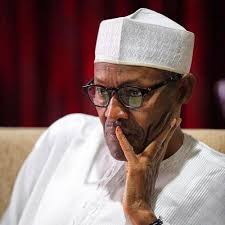IMF Projects 2.0% 2019 GDP Growth For Nigeria In Latest Global Outlook

The International Monetary Fund (IMF), on Monday released its 2019 World Economic Outlook (WEO), projecting that Nigeria’s Gross Domestic Product (GDP) would grow by 2.0% this year and 2.2% in 2020, up from 0.8% and 1.9% in 2017 and 2018 respectively.
This growth is low, given that over one-third of sub-Saharan economies are expected to grow above 5% in both years.
Helped by this robust growth, Nigeria’s economic growth is expected to be significantly slower than the 3.5% and 3.6% for 2019 and 2020 respectively estimated for sub-Saharan Africa, an increase from 2.9% in the previous two years.
For both years the projection is 0.3 percentage point lower than last October’s projection, after softening oil prices have caused downward revisions for Angola and Nigeria.
Nigeria’s estimated growth is expected to come faster than South Africa, the second largest economy on the continent, which the IMF believes could grow by 1.4% and 1.7% this year and next. In 2017, South Africa grew at 1.3%, which dropped by almost half at 0.8% last year.
Meanwhile, the IMF statement noted the weakened global expansion, with growth for 2018 estimated at 3.7%, as in the October 2018 WEO forecast, despite weaker performance in some economies, notably Europe and Asia.
The global economy is projected to grow at 3.5% this year and 3.6% in 2020, representing 0.2% and 0.1% below last October’s projections, the IMF added, noting that the global economy was “revised downward in the last WEO, partly because of the negative effects of tariff increases enacted in the United States and China earlier that year.
“The further downward revision since October in part reflects carry over from softer momentum in the second half of 2018—including in Germany following the introduction of new automobile fuel emission standards and in Italy where concerns about sovereign and financial risks have weighed on domestic demand—but also weakening financial market sentiment as well as a contraction in Turkey now projected to be deeper than anticipated.”
The outlook noted the volatility in crude oil prices “since August, reflecting supply influences, including US policy on Iranian oil exports and, more recently, fears of softening global demand. As of early January, crude oil prices stood at around $55 a barrel, and markets expected prices to remain broadly at that level over the next 4–5 years.
The report also projected average oil prices at just below $60/barrel in 2019 and 2020, down from about $69 and $66, respectively, in the last WEO.





